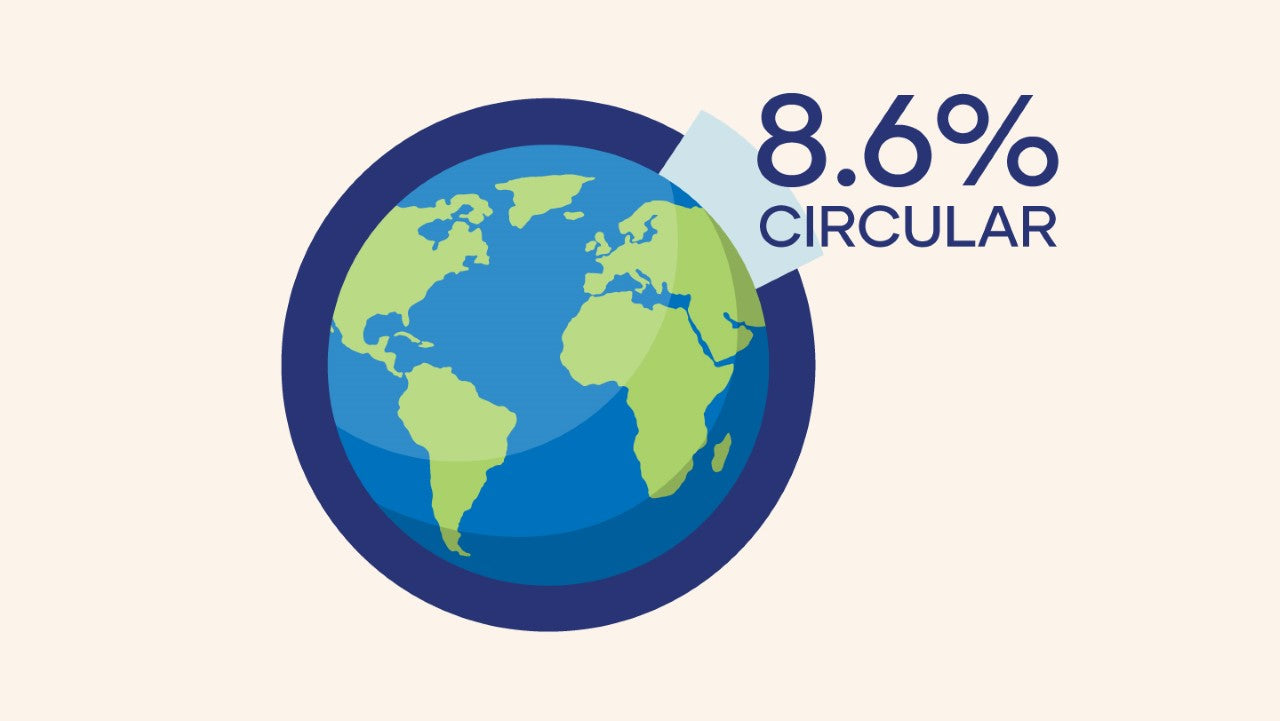[[ROW-INTRO]]Every year, Circle Economy publishes a Circularity Gap Report which measures how circular our world currently is. A perfectly circular world would be one where no resources are wasted but are instead endlessly reused and recycled. But - you guessed it - our world, including the fashion industry, still has a long way to go. This blog provides a summary of the report's findings as well as its proposed solutions.[[ROW-INTRO-END]]
The main finding
First things first: The main finding of this report was that our world is currently only 8.6% circular. But what does this mean? It means that currently over 91% of the resources we take from our earth are wasted. And we take a lot - between COP21 in 2015 (where the Paris Agreement was signed) and COP26 in 2021, half a trillion tonnes of virgin material were extracted globally.
[[ROW-FULL-IMAGE]]

[[ROW-FULL-IMAGE-END]]
The relation to greenhouse gas emissions
This resource waste has a significant impact on the amount of greenhouse gases (GHGs) we emit. According to Circle Economy, 70% of all GHGs emitted are related to material handling and use. But the report does not only give gloomy figures, it also gives clear insights into where these emissions come from. By providing this information, it becomes clear which areas need to be tackled first. Within this figure presenting the most impactful industries, manufactured goods (bottom right) include the fashion industry. While estimates on the exact figure vary, it is known that fashion is responsible for billions of tonnes of CO2 equivalent.
[[ROW-FULL-IMAGE]]
[[ROW-FULL-IMAGE-END]]
Image courtesy: https://www.circularity-gap.world/2022#Download-the-report
The role of the fashion industry
One reason for this is that the fashion industry is not nearly circular enough. Many big brands still function according to a linear model where resources are continuously extracted to make products which ultimately end up in landfill. According to the 2022 State of Fashion report "Currently, less than 10 percent of the global textile market is composed of recycled materials, and this is largely the product of open-loop recycling, using PET bottle waste, which does not address the need to recycle materials from the fashion industry".
[[ROW-FULL-IMAGE]]

[[ROW-FULL-IMAGE-END]]
Circular business models to the rescue
But our own circular business model demonstrates that things can be done differently. By recycling old jeans and making new ones out of them, we show that closed-loop recycling within the fashion industry is possible. And through our Road to 100 project we are creating the first pair of jeans made from 100% post-consumer recycled cotton. These jeans will require no virgin cotton at all. Our hope is that this will inspire others within the industry to increase their own circular efforts.
[[ROW-FULL-IMAGE]]

[[ROW-FULL-IMAGE-END]]
Image courtesy: Circle Economy, https://www.circularity-gap.world/2022#Download-the-report
Circle Economy's solutions
Based on their measurements, Circle Economy proposes 21 further strategies to provide efficient approaches to increase circularity worldwide. These focus on housing & infrastructure, nutrition, mobility, manufactured goods, healthcare and communication. With these strategies, the hope is that our world will be significantly more circular by next year's report. Fingers crossed!






